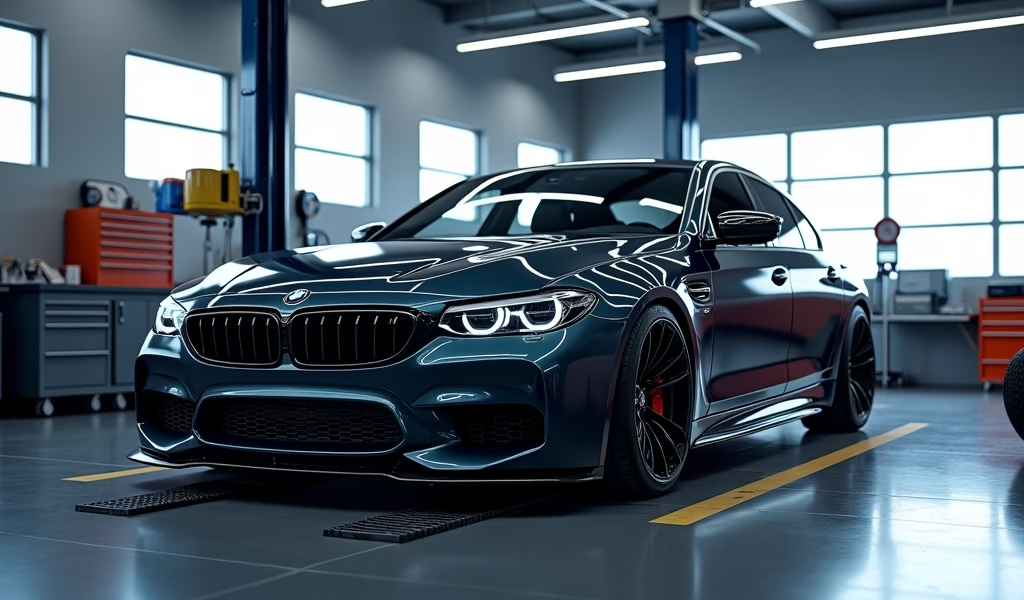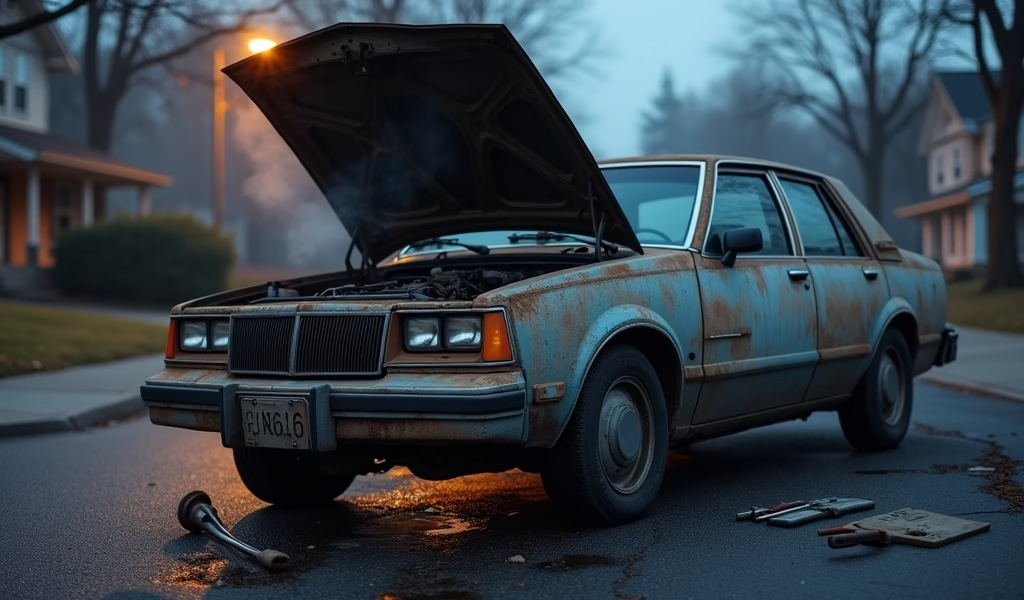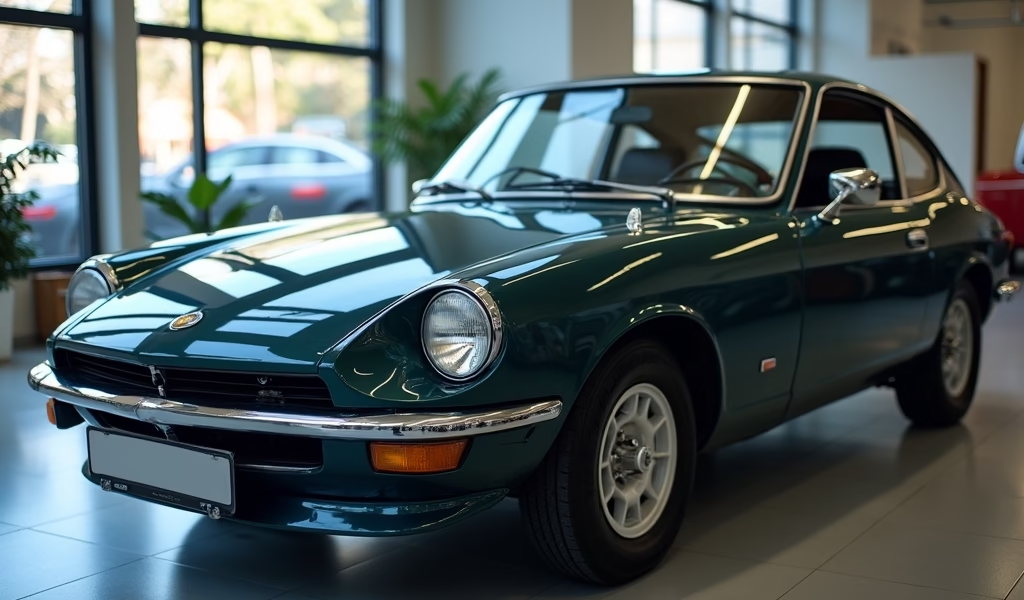Overview
This article outlines seven essential maintenance strategies for used cars: regular fluid checks, preventative maintenance scheduling, tire care, battery maintenance, interior preservation, exterior protection, and developing mechanical listening skills. Consistent attention to these areas can extend a used vehicle’s lifespan to 200,000+ miles, optimize performance, ensure safety, and protect resale value—making maintenance equally as important as the initial purchase decision.
Table of Contents
- Introduction to Best Used Cars: Why Maintenance Matters
- 1. Regular Fluid Checks: The Lifeblood of Your Vehicle
- 2. Creating a Preventative Maintenance Schedule
- 3. Tire Care: Where the Rubber Meets the Road
- 4. Battery Maintenance: Keeping Your Power Source Healthy
- 5. Interior Care: Preserving Comfort and Value
- 6. Exterior Protection: Defending Against the Elements
- 7. Developing Mechanical Listening Skills
- Conclusion: Protecting Your Used Car Investment
- Frequently Asked Questions
Introduction to Best Used Cars: Why Maintenance Matters
In today’s automotive market, buying a best used car isn’t just economical—it’s smart. A well-maintained used vehicle can provide years of reliable service without the steep depreciation hit that comes with driving a new car off the lot. I’ve spent 25 years under the hood, and I’ll tell you straight: the difference between a used car that lasts 50,000 more miles and one that goes 150,000 more often comes down to how you care for it.
Most buyers focus solely on finding the right model at the right price, but overlook the importance of ongoing maintenance. As a mechanic, I see the consequences daily—preventable issues that turn budget-friendly purchases into money pits. The good news? With some consistent attention and care, your used vehicle can deliver exceptional reliability and value.
In this guide, I’ll walk you through seven proven care strategies that keep your used car running like new. These aren’t complicated manufacturer secrets—just straightforward practices that protect your investment. Let’s get your hands a little dirty and save you a lot of money.
1. Regular Fluid Checks: The Lifeblood of Your Vehicle
Your car needs fluids like your body needs water—it’s that simple. These liquids keep everything running smoothly, cool, and protected. In my garage, the first thing I check on any vehicle is fluid levels and condition.
Engine oil tops the priority list. It lubricates dozens of moving parts that would otherwise create enough friction to destroy your engine in minutes. In used cars, especially those with higher mileage, checking oil monthly isn’t excessive—it’s necessary. Look for darkening color, metallic particles, or a burnt smell, all warning signs of potential issues.
Beyond oil, your vehicle depends on several other critical fluids:
- Transmission fluid: Should be red, not brown or burnt-smelling
- Coolant: Protects against both freezing and overheating
- Brake fluid: Hygroscopic (absorbs moisture), needs regular replacement
- Power steering fluid: Often overlooked until steering becomes difficult
- Windshield washer fluid: Simple but essential for visibility
The manufacturer’s recommended change intervals provide a baseline, but used vehicles often benefit from more frequent changes. I advise my customers to err on the side of caution—an oil change costs far less than an engine replacement. For high-mileage vehicles (over 100,000 miles), consider synthetic oils that provide better protection and longer service life.
One tip from my years in the shop: keep a simple maintenance log in your glove compartment. Note the date, mileage, and service performed. This habit helps you track patterns and avoid the costly “I thought I just changed that” syndrome.

2. Creating a Preventative Maintenance Schedule
Every used car deserves a customized maintenance schedule that accounts for its age, mileage, and condition. Think of it as a health plan for your vehicle. In my experience, cars that follow regular maintenance schedules outlast their neglected counterparts by years, not just months.
For most vehicles under 100,000 miles, I recommend these service milestones:
- Every 3,000-5,000 miles: Oil change and filter replacement
- Every 15,000-30,000 miles: Air filter replacement
- Every 30,000 miles: Transmission service, fuel system cleaning
- Every 60,000 miles: Timing belt inspection (if equipped), cooling system service
- Every 90,000-100,000 miles: Major tune-up, including spark plugs
Digital tools have made tracking maintenance easier than ever. Apps like CarCare or CARFAX Car Care can transform your maintenance approach from reactive to proactive. These tools send reminders based on your specific vehicle’s needs and driving habits.
When buying a used car, request service records and build your schedule from there. If records aren’t available, consider performing a baseline service—oil change, filter replacement, and inspection—to establish your starting point. It’s a small investment that provides peace of mind and valuable information about your vehicle’s condition.
Remember that maintenance isn’t just about preventing breakdowns—it’s about optimizing performance. A well-maintained engine delivers better fuel economy, stronger acceleration, and overall smoother operation. The money you spend on regular service often comes back to you in reduced fuel costs and fewer emergency repairs.
3. Tire Care: Where the Rubber Meets the Road
Your tires are the only points of contact between your vehicle and the road, making them crucial for both safety and performance. In my decades at the shop, I’ve seen countless issues that could have been avoided with basic tire maintenance.
Start with pressure checks—at least monthly and before long trips. The correct pressure isn’t what’s stamped on the tire sidewall; it’s what’s listed on the driver’s door jamb sticker or in your owner’s manual. Proper inflation improves handling, extends tire life, and boosts fuel economy by up to 3% according to Department of Energy research.
Rotation is equally important. Every 5,000-7,000 miles, have your tires rotated to ensure even wear. Front tires typically wear differently than rear tires due to steering and weight distribution. I recommend coupling rotation with a balance check—an out-of-balance tire can cause premature wear on suspension components.
For tread depth, the penny test works well: insert a penny with Lincoln’s head downward into your tread groove. If you can see the top of Lincoln’s head, your tread depth is below 2/32 inch, and it’s time for new tires. For those driving in areas with seasonal weather changes, consider dedicated winter tires when temperatures consistently fall below 45°F.
Alignment issues show up as uneven tire wear—inside or outside edges wearing faster than the center. If you notice your vehicle pulling to one side or your steering wheel isn’t centered when driving straight, schedule an alignment check. The $100 or so you’ll spend on alignment can save hundreds in premature tire replacement.
4. Battery Maintenance: Keeping Your Power Source Healthy
Battery failures rank among the most common reasons for roadside assistance calls. In used vehicles, especially those approaching the five-year mark, battery health becomes increasingly important. Winter mornings reveal battery problems that summer warmth conceals.
Visual inspection should be part of your regular under-hood checks. Look for corrosion around terminals—that powdery white or greenish substance acts like plaque in your car’s electrical system. Clean terminals using a mixture of baking soda and water, ensuring connections are tight afterward.
If your engine cranks slowly during startup or your headlights dim at idle, your battery might be weakening. Most auto parts retailers offer free battery testing, providing voltage readings and cold-cranking amp measurements. After three years of service, consider having your battery tested twice annually, particularly before extreme temperature seasons.
The average battery lasts 3-5 years, though premium models and proper maintenance can extend this lifespan. When replacement becomes necessary, match your vehicle’s requirements for size, terminal configuration, and power rating. I often recommend slightly higher cold-cranking amps than the minimum requirement for better cold-weather performance.
For vehicles that sit unused for extended periods (over two weeks), consider using a battery maintainer. These devices, unlike trickle chargers, monitor battery condition and provide just enough power to keep the battery at optimal charge without overcharging. It’s a small investment that can double your battery’s useful life.

5. Interior Care: Preserving Comfort and Value
The inside of your car takes a beating from UV rays, spills, dirt, and daily use. Proper interior care makes driving more pleasant and preserves resale value. I’ve seen clean, well-maintained interiors add thousands to a vehicle’s value when it’s time to sell or trade.
Different materials need different care approaches:
- Leather: Clean quarterly with dedicated leather cleaner and condition to prevent cracking
- Cloth: Vacuum weekly and treat stains immediately with appropriate cleaners
- Vinyl/plastic: Protect with UV-resistant products to prevent fading and cracking
- Carpeting: Deep clean twice yearly with extraction methods to remove embedded dirt
Dashboard preservation becomes particularly important in used vehicles. Quality UV protectant products create a barrier against sun damage, while dash covers offer additional protection for vehicles regularly parked outdoors. Remember that your dashboard is essentially a plastic and vinyl showcase for UV deterioration—once it cracks, repairs are rarely satisfactory.
Moisture control remains an often-overlooked aspect of interior care. Check weatherstripping regularly, and use desiccants if you notice persistent fogging or dampness. For those battling stubborn odors, activated charcoal products eliminate rather than mask unwanted scents. I recommend placing these under seats where air circulation will distribute their effect throughout the cabin.
Don’t overlook your cabin air filter, especially if you have allergies or respiratory concerns. This simple component, typically located behind your glove compartment, filters the air entering your vehicle through the HVAC system. Most manufacturers recommend replacement every 15,000-30,000 miles, but dusty conditions may necessitate more frequent changes.
6. Exterior Protection: Defending Against the Elements
Your vehicle’s paint isn’t just about looks—it’s the first line of defense against rust and corrosion. In my years of restoration work, I’ve seen how proper exterior care prevents costly body repairs down the road.
Regular washing removes contaminants that damage paint over time. I recommend washing every two weeks at minimum, with immediate attention after exposure to road salt, tree sap, or bird droppings. Hand washing remains superior to automatic systems, though touchless automatic washes provide a reasonable alternative when time is limited.
Waxing creates a sacrificial barrier between your paint and environmental hazards. For used vehicles, quarterly waxing provides optimal protection. Before waxing, consider using a clay bar treatment annually to remove embedded contaminants that washing can’t address. You’ll be amazed at what comes off even a seemingly clean paint surface.
Pay special attention to your headlights. Cloudy, yellowed headlights aren’t just unsightly—they’re dangerous, reducing nighttime visibility by up to 80%. Restoration kits cost $20-30 and can dramatically improve illumination. After restoration, apply a UV protectant specifically designed for headlight lenses to prevent rapid re-deterioration.
Rust prevention deserves special mention for used cars. Inspect vulnerable areas regularly, particularly wheel wells, door edges, and undercarriage components. Address any paint chips promptly with manufacturer-matched touch-up paint. For vehicles in coastal or winter-weather regions, consider annual undercarriage treatments to prevent salt damage.
One often-overlooked exterior maintenance item: rubber trim and weatherstripping. These components prevent water intrusion and wind noise, but deteriorate over time. Apply silicone-based protectants to keep rubber components supple and functional. It’s an inexpensive treatment that prevents costly water damage and makes your vehicle more pleasant to drive.
7. Developing Mechanical Listening Skills
One of the most valuable skills I teach my customers is how to listen to their vehicles. Cars communicate problems long before they leave you stranded—if you know how to interpret the signals.
Unusual sounds represent your car’s primary communication method:
- Squealing during braking: Likely worn brake pads with wear indicators making contact
- Grinding during gear changes: Transmission concerns requiring professional evaluation
- Ticking from the engine: Potential valve train issues or simply low oil level
- Humming or roaring from wheels: Possibly worn wheel bearings
- Clunking over bumps: Suspension components wearing out
Pay attention to how your vehicle feels, too. Does it pull to one side during braking? Does the steering wheel vibrate at certain speeds? Is acceleration hesitant when you press the gas? These sensations often precede more noticeable symptoms and provide early warning of developing issues.
Modern vehicles communicate through dashboard warning lights. While the check engine light receives the most attention, equally important are indicators for ABS, battery, oil pressure, and stability control. Don’t ignore these warnings—they’re designed to alert you before catastrophic failure occurs.
Affordable diagnostic tools have revolutionized home car care. Basic OBD-II scanners connect to your smartphone and provide specific error codes rather than just a generic warning light. For used car owners, this $20-100 investment can pay for itself the first time it helps you determine whether an issue requires immediate attention or can wait until your next scheduled service.
Conclusion: Protecting Your Used Car Investment
Caring for a used car isn’t complicated, but it does require consistency and attention. The seven strategies we’ve covered form a comprehensive approach to vehicle maintenance that can dramatically extend your car’s useful life and maintain its value. Each maintenance dollar spent proactively typically saves several in prevented repairs.
Remember that maintenance isn’t just about avoiding breakdowns—it’s about optimizing performance, ensuring safety, and protecting your investment. The difference between a used car that delivers 50,000 trouble-free miles and one that needs constant repairs often comes down to these fundamental care practices.
As a mechanic who’s seen thousands of vehicles over my career, I can tell you with certainty: how you maintain your used car matters just as much as which car you choose to buy. With these proven care strategies, your used vehicle can deliver exceptional value, reliability, and peace of mind throughout your ownership journey.
Establish these habits now, and you’ll join the ranks of drivers who measure their vehicle ownership in decades rather than years. Your wallet—and your future self—will thank you.
Frequently Asked Questions
What’s the most reliable used car brand?
Toyota, Honda, and Lexus consistently rank highest for long-term reliability. These brands typically have lower maintenance costs and longer vehicle lifespans when properly maintained.
How often should I change oil in a high-mileage used car?
For vehicles over 100,000 miles, change conventional oil every 3,000-4,000 miles or synthetic every 5,000-7,500 miles. Older engines tend to run dirtier and may consume oil between changes.
Should I buy an extended warranty for my used car?
Extended warranties make sense for luxury vehicles with expensive repair costs or cars with known reliability issues. For typically reliable models with good maintenance history, the money might be better saved for actual repairs.
What’s the best way to check a used car’s history before buying?
Get a vehicle history report from CARFAX or AutoCheck using the VIN number. These reports show accident history, title status, service records, and previous ownership information.
How long can a well-maintained used car typically last?
Many modern vehicles can exceed 200,000-250,000 miles with proper maintenance. Regular fluid changes, timely repairs, and addressing issues promptly are the keys to maximizing lifespan.

